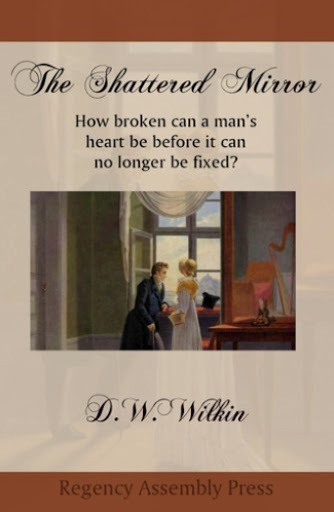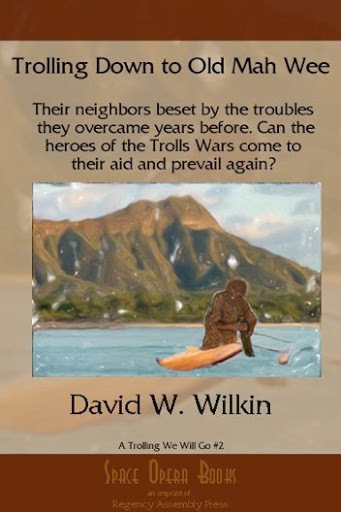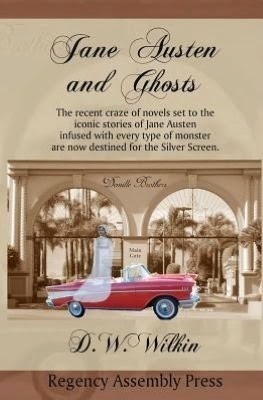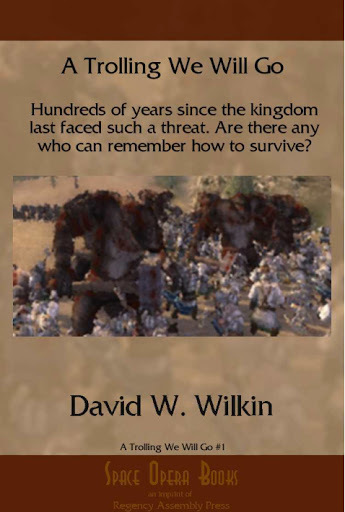D.W. Wilkin's Blog, page 144
March 26, 2015
RAP has The Shattered Mirror, A Regency Romance
The Shattered Mirror
For your enjoyment, one of the Regency Romances I published. It is available for sale and now at a reduced price of $3.99, and I hope that you will take the opportunity to order your copy.
Order for yourself or as a gift. It is now available in a variety of formats. For just a few dollars this Regency Romance can be yours for your eReaders or physically in Trade Paperback.
Barnes and Noble for your Nook
and in Trade Paperback
Bridget Halifax-Stokes was giddy with the excitement of her season in London. Town had beckoned and her season came on the heels of the end of the war against the tyrant.
All the handsome men were returning heroes. What better year to come out.
Her father thought it all nonsense. Her mother believed that it would be the best showing of any of her daughters.
More lords available and luck that Bridget was just the perfect age.
All is fun and frivolity until Bridget literally crashes into Sir Patrick Hampton as he limps along the high street. A man she knew once well, now a stranger with dark and foreboding eyes.
Feedback
If you have any commentary, thoughts, ideas about the book (especially if you buy it, read it and like it ;-) then we would love to hear from you.

March 25, 2015
Regency Personalities Series-General Lord Robert Edward Henry Somerset
Regency Personalities Series
In my attempts to provide us with the details of the Regency, today I continue with one of the��many period notables.
General Lord Robert Edward Henry Somerset
19 December 1776 ��� 1 September 1842
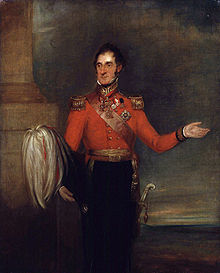
Robert Edward Henry Somerset
General Lord Robert Edward Henry Somerset was the third son of the 5th duke of Beaufort, and elder brother of Lord Raglan.
Joining the 15th Light Dragoons in 1793, he became captain in the following year, and received a majority after serving as aide-de-camp to the Duke of York in the Dutch expedition of 1799. At the end of 1800 he became a lieutenant-colonel, and in 1801 received the command of the 4th Dragoons. From 1799 to 1802 he represented the Monmouth Boroughs in the House of Commons, from 1803 to 1823 sat for Gloucestershire and from 1834 to 1837 was MP for Cirencester.
He commanded his regiment at the battles of Talavera and Bu��aco, and in 1810 received a colonelcy and the appointment of ADC to the king. In 1811, along with the 3rd Dragoon Guards, the 4th Dragoons fought a notable cavalry action at Usagre, and in 1812 Lord Edward Somerset was engaged in the great charge of Le Marchant’s heavy cavalry at Salamanca. His conduct on this occasion (he captured five guns at the head of a single squadron) won him further promotion, and he made the remaining campaigns as a major-general at the head of the Hussar brigade (7th, 10th and 15th Hussars).
At Orthes he won further distinction by his pursuit of the enemy; he was made KCB, and received the thanks of parliament. At Waterloo he was in command of the Household Cavalry Brigade, which distinguished itself not less by its stern and patient endurance of the enemy’s fire than by its celebrated charge on the cuirassiers of Milhaud’s corps.
The brigadier was particularly mentioned in Wellington’s despatches, and received the thanks of parliament as well as the Army Gold Cross with one clasp for his services at Talavera, Salamanca, Vitoria, Orthez, and Toulouse; the Maria Theresa and other much-prized foreign orders.
He died a general and GCB in 1842.
The ‘Lord Somerset Monument’ stands high on the Cotswold Edge at Hawkesbury, Gloucestershire (grid reference ST772878), near the ancestral home of Badminton, Gloucestershire. It was erected in 1846.
On 17 October 1805 he married Lady Louisa Augusta Courtenay (1781 – 8 February 1825), a younger daughter of William Courtenay, 8th Earl of Devon, with whom he had several children, three sons and five daughters:
Robert Henry Somerset (1806���1807)
Louisa Isabella Somerset (1807���1888)
Frances Caroline Somerset, later Mrs Theophilus Clive (1808���1890) who married 1840 Theophilus Clive (d. 1875).
Blanche Somerset, later Mrs Charles Locke (1811���1879) who married 1845, Rev. Charles Courtenay Locke (d. 1848)
Matilda Elizabeth Somerset, later Mrs Horace Marryat (1815-3 April 1905) (portrait 1843) who married 1842 Horace Marryat
Lt-Gen. Edward Arthur Somerset (1817���1886) married Agatha Miles (1827 – 1912), daughter of Sir William Miles, Bt
Georgina Emily Somerset (1819-?) who married 1852 Hon Robert Neville Lawley (who died 1891)
Augustus Charles Stapleton Somerset (1821���1854)
And Coming on April 1st, 2015
Beaux Ballrooms and Battles anthology, celebrating the 200th anniversary of the victory at Waterloo in story.
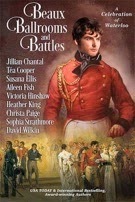
Looks good, huh? The talented writer and digital artist, Aileen Fish created this.
It will be available digitally for $.99 and then after a short period of time sell for the regular price of $4.99
The Trade Paperback version will sell for $12.99

My story in the anthology is entitled: Not a Close Run Thing at All, which of course is a play on the famous misquote attributed to Arthur Wellesley, ���a damn close-run thing��� which really was ���It has been a damned nice thing ��� the nearest run thing you ever saw in your life.���
Samantha, Lady Worcester had thought love was over for her, much like the war should have been. The Bastille had fallen shortly after she had been born. Her entire life the French and their Revolution had affected her and all whom she knew. Even to having determined who she married, though her husband now had been dead and buried these eight years.
Yet now Robert Barnes, a major-general in command of one of Wellington���s brigades, had appeared before her, years since he had been forgotten and dismissed. The man she had once loved, but because he had only been a captain with no fortune, her father had shown him the door.
With a battle at hand, she could not let down the defenses that surrounded her heart. Could she?
As her father���s hostess, she had travelled with him to Brussels where he served with the British delegation. Duty had taken her that night to the Duchess of Richmond���s ball. The last man she ever expected to see was Robert, who as a young captain of few prospects, had offered for her, only to be turned out by her father so that she could make an alliance with a much older, and better positioned (wealthy), aristocrat.Now, their forces were sure to engage Napoleon and the resurgent Grande Arm��e. Meeting Robert again just before he was to be pulled into such a horrific maelstrom surely was Fate���s cruelest trick ever. A fate her heart could not possibly withstand.


Trolling Down to Old Mah Wee, another Fantasy
Trolling Down to Old Mah Wee
Not only do I write Regency and Romance, but I also have delved into Fantasy.
The Trolling series, (the first three are in print) is the story of a man, Humphrey. We meet him as he has left youth and become a man with a man���s responsibilities. We follow him in a series of stories that encompass the stages of life.
We see him when he starts his family, when he has older sons and the father son dynamic is tested. We see him when his children begin to marry and have children, and at the end of his life when those he has loved, and those who were his friends proceed him over the threshold into death.
All this while he serves a kingdom troubled by monsters. Troubles that he and his friends will learn to deal with and rectify. It is now available in a variety of formats.
For $2.99 you can get this 2nd book in the fantasy adventure series of Humphrey and Gwendolyn.
Barnes and Noble for your Nook
When the neighboring kingdom of Mah Wee begins to experience the same problems that beset Torahn some years before, they urgently request the aid of the experts in containing a new Troll infestation. But eradicating Trolls is not as easy as exterminating a few rats or mice.
Trolls are bigger than men, they are stronger than men, and then are meaner than men. Humphrey Cutter and his band of mismatched warriors must once again rise to the occasion, but can they without the aid of expertise of Gwendolyn and her particular skills? ����
Mah Wee, an ancient kingdom, with a monarch more steeped in the rights of being a king rather than the obligations and duties that a king should be. Here Humphrey and his crew finds that they have more than Trolls to overcome if they are to save Mah Wee from the same or nearly similar problems that they faced before in Torahn.
But, as Humphrey knows, nothing can truly be accomplished if the lovely Gwendolyn is not able to lend her aid as well.
Feedback
If you have any commentary, thoughts, ideas about the book (especially if you buy it, read it and like it ;-) then we would love to hear from you.

March 24, 2015
Beaux, Ballrooms, and Battles -Author Interview Series Jillian Chantal
Today we have an author interview from my latest work, Beaux Ballrooms and Battles anthology.
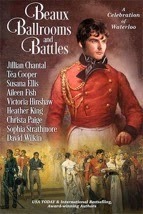
It will be available digitally for $.99 and then after a short period of time sell for the regular price of $4.99
The Trade Paperback version will sell for $12.99
My story in the anthology is entitled: Not a Close Run Thing at All, which of course is a play on the famous misquote attributed to Arthur Wellesley, ���a damn close-run thing��� which really was ���It has been a damned nice thing ��� the nearest run thing you ever saw in your life.���
Today we are fortunate to have with us Jillian Chantal who writes in both romance and mystery genres. Though we want to hear of his historical work in the Regency.
1) What moved you to become an author?
Like many, I���ve always been a natural story-teller. I can make pretty much any event sound entertaining even if it wasn���t at the time I lived through it. From this, came a natural progression to fiction- after all, I could make the tales way more interesting if I wasn���t held back by the truth.
2) How did you find out about the Waterloo project?
I was asked by Susana Ellis if I wanted to participate.
3) Can you tell us some of the things that attracted you to writing a piece on the anniversary of this famous battle.
I���ve always been intrigued by the era and that particular battle, so it was easy to say yes. The Napoleonic Wars is an interesting time period as a lot of what we see even today in the landscape of Europe was formed then.
4) Tell us about your current story in the anthology.
The hero is assigned to Wellington���s staff. The heroine is the daughter of an Earl and her family has joined the many who lived in Belgium during the war. She���s attracted to the hero and she causes a bit of a mini scandal at Lady Richmond���s ball when she bestows her handkerchief on the hero before the battle.
He���s sent on an errand during the Battle of Quatre Bas and things change for him from that point forward. The heroine is determined to come to his aid even though her mother disapproves.
5) How did the story begin to develop in your mind?
I started thinking over ideas when Susana invited me to participate. Noting there weren���t many ways for a heroine to be anywhere near the battle, I had to decide what the heroine was doing on the continent. Once I settled on Lady Richmond���s ball, the rest was pretty easy.
6) What did you find most challenging about this story?
I read a few books on Napoleon and his tactics as well as the battle itself. It���s always hard not to put a lot of the research in- that would bore the reader- but to make sure there���s enough to ground the reader in the story.
7) Tell us a little about yourself?
I work as a lawyer so the research aspect of historicals is a fun thing for me since it���s not law books and cases. I live in Florida and love the laid back lifestyle that affords.
8) What is your next work, and beyond that, what do you want to work on.
I am working on another novella for a Regency anthology. I have a murder mystery with a romantic element in edits now with one of my publishers. I love to write all kinds of stories, including contemporary, historical and a bit of paranormal.
9) In the Waterloo Shorty Story, is there an excerpt to share? Your favorite scene, a part of your life that you put into the work and think it came out exceptionally well that you would like to share.
���Napoleon is on the march. He���s outside the city. The Prince of Orange has already left���before supper even���and the rest of the men will be reporting to their units soon.���
Emmaline gasped. ���Outside the city?��� Her gut clenched. This was way too close. Being this near to a battle site was horrifying. Her eyes darted around the room until they found Captain Denby. She turned her gaze to the others standing beside her. ���I���ll be right back.���
She strode off with Lydia behind her asking, ���Where are you going?���
Not responding to her friend, Emmaline made a beeline toward where Jeremiah stood with two other officers in the same regimental uniform as he. Once she reached him, she touched the sleeve of his coat. ���May I speak to you for a moment?���
���I���m sorry, Miss Rothesay, I���m on my way out.���
���It���ll just take a second.���
He turned to his companions. ���Excuse me.���
Leaving Lydia behind, Emmaline pulled Jeremiah to one side and once they stood close to the wall she pulled her lace-edged hanky from her where she���d tucked it in the end of her sleeve and tried to hand it to him.
���What���s this?��� He stared at it as it hung in the air between them held up by her index finger and thumb.
���Back in the middle ages and in the time of Henry VIII, a knight asked a lady for her colors to wear into the joust. For good luck, you know. I���d like you to wear mine in the battle ahead.���
���Do you think it proper? We hardly know one another.���
���Proper or not, I���m offering this to you as a token of good will and my hope that you will survive the next days. Surely you won���t turn me down?��� Tears welled in her eyes, blurring her vision. Had she misunderstood the way he���d looked at her? Did he hold her in no regard at all?
Jeremiah���s face turned red. Emmaline couldn���t tell if it was from embarrassment or anger. A little intimidated, she took a half step back and almost collided with one of Lady Richmond���s friends.
10) Who do you think influenced your writing, this work, and who do you think you write like?
I have a hard time answering this one since I have spent a lifetime devouring books and I think my style is a conglomeration of all I���ve taken in.
11) Who do you read? What are the things that a reader can identify with that you have grounded yourself in.
Particular favorites I return to are the Sherlock Holmes books, Martha Grimes and Lauren Willig.
12) When writing, what is your routine?
I work all day so I do most of my work at night and on weekends. I like to write with background noise as I have mostly written with people in the room like my kids and spouse.
13) Do you think of yourself as an artist, or as a craftsman, a blend of both?
Most definitely a blend.
14) Where should we look for your work.
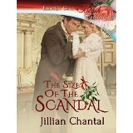
www.Jillianchantal.com
Jillian is published at:
Sweet Cravings: http://sweetcravingspublishing.com/
Secret Cravings: http://store.secretcravingspublishing.com/
Elloras Cave: http://www.ellorascave.com/
Bookstrand: http://www.bookstrand.com/
Desert Breeze: http://www.desertbreezepublishing.com/

Regency Personalities Series-Major-General Sir William Ponsonby
Regency Personalities Series
In my attempts to provide us with the details of the Regency, today I continue with one of the��many period notables.
Major-General Sir William Ponsonby
3 October 1772 ��� 18 June 1815
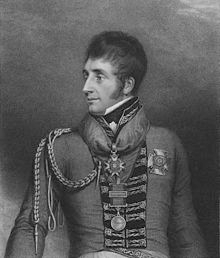
William Ponsonby
Major-General Sir William Ponsonby was the second son of William Ponsonby, 1st Baron Ponsonby of Imokilly and Hon. Louisa Molesworth. He married Hon. Georgiana FitzRoy, youngest daughter of Charles FitzRoy, 1st Baron Southampton. Between 1796 and 1798, Ponsonby sat as a Member of Parliament (MP) in the Irish House of Commons and represented Bandonbridge. Subsequently he stood for Fethard (County Tipperary) and held this seat until the Act of Union in 1801. He entered the British House of Commons in 1812, sitting for Londonderry until his death. In 1815, he was appointed a Knight Commander of the Order of the Bath (KCB).
When Ponsonby’s command, the 5th Dragoon Guards, arrived in the Peninsula in October 1811, it became part of John Le Marchant’s heavy cavalry brigade. For the rest of the war, this brigade included the 5th Dragoon Guards and the 3rd and 4th Dragoons. Ponsonby took part in Le Marchant’s famous charge at the Battle of Salamanca in July 1812. On that occasion, the British heavy dragoons rode down one French infantry division and part of a second before being repulsed. Upon Le Marchant’s death in the battle, Ponsonby took over the brigade, participating in the campaign that included the Siege of Burgos. In 1813, Ponsonby led his 1,200-strong cavalry brigade at the Battle of Vitoria. During the Battle of the Pyrenees and the fall campaigns in the mountains, the Duke of Wellington sent the bulk of his cavalry to the rear. On 25 January 1814, Ponsonby took leave of his brigade and in the final battles in France, Lord Charles Manners exercised command.
Ponsonby’s part in the Battle of Waterloo has been remembered because it highlights some pertinent points about cavalry charging. Ponsonby was in command of the Union Brigade, so-called because it included an English, a Scottish and an Irish regiment. The brigade consisted of the 1st Royal and 6th Inniskilling Regiments of Dragoons in the first line and the 2nd Royal North British Dragoons (Scots Greys) in reserve. It had counter-attacked to great effect against the disorganised French columns of Drouet D’Erlon’s I Corps. Carried away by their initial success, however, the brigade failed to rally and continued towards the French positions.
The Scots Greys in particular, forgetting their supporting role and ignoring the ���recall���, charged on in disordered groups, some of whom reached the French guns on the other side of the valley. By this time their horses were blown and a swift retribution followed in the shape of a counter-attack by the French Lancers. The brigade suffered very heavy losses, being effectively destroyed, and it played no further part in the battle. Ponsonby, who was mounted on a horse of less value than the best one in his stable, rode too far and with his horse mired in mud near to enemy lines was set upon by French Lancers. Recognising his rank and worth as a prisoner the French beckoned on him to surrender, but he didn’t understand them. Then when a group of his own Union Brigade spotted him and rode to his rescue, the Lancers from one of the French line regiments (either the 3rd Lancers or 4th Lancers) attached to d’Erlon’s I Corps were left with no option but to kill him. Myths growing up after the battle turned this into a guardsman from the “Red Lancers”, which included the surviving squadron of Polish lancers.
And Coming on April 1st, 2015
Beaux Ballrooms and Battles anthology, celebrating the 200th anniversary of the victory at Waterloo in story.
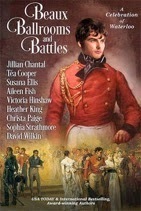
Looks good, huh? The talented writer and digital artist, Aileen Fish created this.
It will be available digitally for $.99 and then after a short period of time sell for the regular price of $4.99
The Trade Paperback version will sell for $12.99

My story in the anthology is entitled: Not a Close Run Thing at All, which of course is a play on the famous misquote attributed to Arthur Wellesley, ���a damn close-run thing��� which really was ���It has been a damned nice thing ��� the nearest run thing you ever saw in your life.���
Samantha, Lady Worcester had thought love was over for her, much like the war should have been. The Bastille had fallen shortly after she had been born. Her entire life the French and their Revolution had affected her and all whom she knew. Even to having determined who she married, though her husband now had been dead and buried these eight years.
Yet now Robert Barnes, a major-general in command of one of Wellington���s brigades, had appeared before her, years since he had been forgotten and dismissed. The man she had once loved, but because he had only been a captain with no fortune, her father had shown him the door.
With a battle at hand, she could not let down the defenses that surrounded her heart. Could she?
As her father���s hostess, she had travelled with him to Brussels where he served with the British delegation. Duty had taken her that night to the Duchess of Richmond���s ball. The last man she ever expected to see was Robert, who as a young captain of few prospects, had offered for her, only to be turned out by her father so that she could make an alliance with a much older, and better positioned (wealthy), aristocrat.Now, their forces were sure to engage Napoleon and the resurgent Grande Arm��e. Meeting Robert again just before he was to be pulled into such a horrific maelstrom surely was Fate���s cruelest trick ever. A fate her heart could not possibly withstand.

Jane Austen Fans Rejoice, Jane is BACKKKK��� Jane Austen and Ghosts
Special Sale Price!
Jane Austen and Ghosts.
Not only do I write Regency and Romance, but this can take a humorous turn. Some years back, I am sure readers of this blog will be aware that some writers began to take great liberty with Jane Austen and her works. Pride and Prejudice being liberally rewritten with the inclusion of zombies.
Then other books appeared with sea monsters, and werewolves and vampires. President Lincoln has even made it to the big screen where he is intent on sending foul creatures to hell. It occurred to me, even before I read any of this literature, that Jane would probably not appreciate what had been done to her classic piece.
That the tales and her life have become visual spectacles that we enjoy she might not like either, but is perhaps resigned to. That zombies, ghosts and vampires are now used to follow her own plot lines would I think, have her turning over in her grave. Jane Austen and Ghosts is my take on that.
It is now available in a variety of formats. For a limited time it has been reduced to $2.99 for your eReaders and $8.99 for paperback you can get this Jane Austen adventure.
Barnes and Noble for your Nook
and in Paperback
In the world of moviemaking, nothing is as golden as rebooting a classic tale that has made fortunes every time before when it has been adapted for the silver screen.
Certainly any work by Jane Austen made into a movie will not only be bankable, but also considered a work of art. That is of course until the current wave of adaptations that unite her classic stories with all the elements of the afterlife is attempted to be created.
That these have found success in the marketplace amongst booklovers may not be quite understood by those who make movies. But that they are a success is understood and a reason to make them into movies.
All that being said, perhaps it would also be fair to say that the very proper Jane, were she present to have anything to say about it, would not be pleased. Of course she has been away from this Earth for nearly 200 hundred years.
But does that mean were she upset enough, she wouldn���t come back?
Feedback
If you have any commentary, thoughts, ideas about the book (especially if you buy it, read it and like it ;-) then we would love to hear from you.

March 23, 2015
Beaux, Ballrooms, and Battles -Author Interview Series Victoria Hinshaw
Today we have an author interview from my latest work, Beaux Ballrooms and Battles anthology.
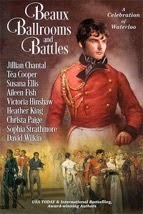
It will be available digitally for $.99 and then after a short period of time sell for the regular price of $4.99
The Trade Paperback version will sell for $12.99
Today we are fortunate to have with us Victoria Hinshaw who writes Regencies and longs to do family sagas as well. Though we want to hear of her historical work in the Regency.
1)What moved you to become an author?
I wrote my first story as a horse-crazy child, sort of a Walter Farley Black Stallion variety in which I was the heroine and won the horse! I always considered myself a writer, though my first work of fiction was not published until I was ��� well, let���s just say, mature.
2) How did you find out about the Waterloo project?
I gave a talk on my 2010 visit to the battle���s 195th Anniversary and heard about the project. I immediately started thinking of potential heroes and heroines.
3) Can you tell us some of the things that attracted you to writing a piece on the anniversary of this famous battle
As a Duke of Wellington groupie���and a fan of all things English, Regency and Historical, and as a dedicated fan of Jane Austen and Fanny Burney, I love anything which indulges my fantasy life, living in the early 19th century, modern plumbing and computer keyboards notwithstanding.
4) Tell us about your current story in the anthology.
Last summer I stood in Apsley House (the Duke���s London residence) and thought about all the years of Waterloo Banquets at which he presided. And then I thought about the women who waited both during the battle and every year while their loved one spend the evening with his fellow officers reliving the past. That���s the kernel of my story.
5) Tell us a little about yourself?
I am a first class procrastinator, able to postpone almost any task to bury myself in books associated with English history. I love to travel and try to get to England at least once a year. I could stay in London forever, but I also love to roam the countryside visiting quaint villages and elegant country mansions. In fact, I took a course at Oxford University in English Country Houses a few years ago. I am a member of the Royal Oak Society, the U.S. support organization for the National Trust. In addition to giving complimentary admission to all NT properties in England and Wales, they have lecture tours and programs in several American cities. So I often attend sessions given by experts from Historic Royal Palaces or the NT.
6) What is your next work, and beyond that, what do you want to work on.
I am working on an article for the Burney Society on Frances (Madame d���Arblay) at Waterloo; a presentation for the next Jane Austen Society of North America AGM in Louisville, KY, in October 2015, and two more novellas I hope will be out soon. Plus I should get the rights back for two more of my previously published regencies, Ask Jane and Least Likely Lovers which I will then convert to e-books.
9) In the Waterloo Short Story, is there an excerpt to share? Your favorite scene, a part of your life that you put into the work and think it came out exceptionally well that you would like to share.
From ���Folie Bleue:���
��� when we came into the drawing room and the door closed behind the majordomo, I could ignore Tante���s frowns no longer.
���You would not be thinking any thoughts about a future with one of those English fellows, would you?��� Her voice was low and grim.
When I did not immediately speak, she went on. ���They looked like boys playing at war to me. Remember, they will fight Napoleon���s men. The Empereur does not spare a soldier because he is young and handsome and flirts with young ladies.���
I did not want my sunny mood spoiled by Tante���s characteristic grumpiness. ���Do not worry.���
���Napoleon will have those boys served up on a platter with his champagne,��� she muttered.
���Do not tell me you believe all those stories about Napoleon? Remember. He was already defeated and sent away once.���
���Which makes him all the more dangerous���
10) Who do you think influenced your writing, this work, and who do you think you write like?
I wish I could say I am most influenced by Jane Austen, but I have to admit my writing is more in the Georgette Heyer style. Jane wrote contemporary romance, with lots of the details we crave ignored ��� people in her time knew what the difference was between tallow and beeswax candles, for example. Heyer wrote historical fiction, as we are. Her research was brilliant, based on long hours in libraries studying diaries, letters, memoirs, newspapers, and other primary sources. Heyer founded the Regency Romance genre, even though we all look to Austen as the ultimate inspiration.
11) Who do you read? What are the things that a reader can identify with that you have grounded yourself in.
Jane Austen, Fanny Burney and Georgette Heyer���and I love many contemporary Regency writers: Balogh, Hern, James, and all the best-sellers. And I recall fondly the works of Laura London, some of the most delightful regencies every published. I treasure my ���Keeper Shelf��� versions. I think they have all been reissued recently. Check here: https://www.facebook.com/lauralondonauthor
12) When writing, what is your routine?
To the keyboard as soon as the coffee is on. Stay as long as possible. Let it flow. And if I get ���stuck,��� I go back and work on the outline ��� which I always start but never finish.
13) Do you think of yourself as an artist, or as a craftsman, a blend of both?
A blend, but really a story teller and entertainer. I hope my work exhibits craft and art, but I certainly don���t pretend it is great Literature. I hope to give people a bit of escape and enjoyment.
For a sample, try my free short story The Boxford Legacy on my website: http://www.victoriahinshaw.com
14) Where should we look for your work.
Victoria���s Website: http://www.victoriahinshaw.com
Blog http://www.victoriahinshaw.com/victorias-vibes—-a-blog
2nd Blog http://onelondonone.blogspot.com
at Amazon

Regency Personalities Series-General Rowland Hill 1st Viscount Hill
Regency Personalities Series
In my attempts to provide us with the details of the Regency, today I continue with one of the��many period notables.
General Rowland Hill 1st Viscount Hill
11 August 1772 ��� 10 December 1842
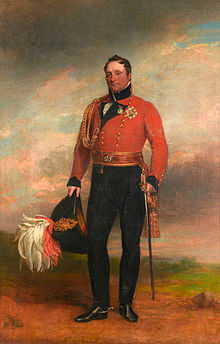
Rowland Hill
Educated at The King’s School in Chester, Hill was commissioned into 38th Foot in 1790. He was promoted to lieutenant on 27 January 1791. On 16 March 1791, after a period of leave, he was appointed to the 53rd Regiment of Foot. He was asked to raise an independent company and given the rank of captain on 30 March 1793.
He served at the siege of Toulon in Autumn 1793 from where he carried the dispatches to London. He then transferred to one of Major General Cornelius Cuyler’s independent companies on 16 November 1793. In 1794 he assisted Thomas Graham in raising the 90th Foot for which he was promoted to major on 27 May 1794 and to lieutenant-colonel on 26 July 1794. (DWW-16 months after he became a Captain, and not quite 22) He was promoted to colonel on 1 January 1800.
In 1801 he commanded the 90th Foot when they landed at Aboukir Bay in Egypt as part of a force under Sir Ralph Abercromby: Hill was seriously wounded in the action when a musket ball hit his head. In the ensuing weeks Hill helped drive the French forces out of Egypt. Hill became a brigadier in 1803 and a major-general on 2 November 1805.
Hill commanded a brigade at the Battle of Roli��a and also at the Battle of Vimeiro in 1808. He participated in Sir John Moore’s 1808���1809 campaign in Spain, commanding a brigade at the Battle of Corunna. While serving under Wellington at the Second Battle of Porto, units of Hill’s brigade launched an impromptu assault across the Douro River that ultimately routed Marshal Nicolas Soult’s French corps from Oporto.
Hill commanded the 2nd Infantry Division at the Battle of Talavera. The night before the battle, Marshal Claude Victor mounted a surprise attack, swept aside two battalions of the King’s German Legion and seized a key elevation. As Hill later recounted, “I was sure it was the old Buffs, as usual, making some blunder.” Nevertheless, he led a reserve brigade forward in the dark. In the short clash that followed, Hill was briefly grabbed and nearly captured by a Frenchman, but his troops recovered the summit. This is the first occasion on which Hill supposedly swore.
Still leading the 2nd Division during Marshal Andr�� Mass��na’s 1810 invasion of Portugal, Hill fought at the Battle of Bussaco. In autumn 1811, Wellington placed Hill in independent command of 16,000 men watching Badajoz. On 28 October he led a successful raid on the French at the Battle of Arroyo dos Molinos. On 21 January 1812 he was appointed to the honorary position of Governor of Blackness Castle and on 22 February 1812 he was appointed a KB. He was made a Knight Grand Cross of the Portuguese Order of the Tower and Sword on 4 May 1812.
In May 1812, after the capture of Badajoz, Hill led a second raid that destroyed a key bridge in the Battle of Almaraz. While Wellington won the Battle of Salamanca, Hill protected Badajoz with an independent 18,000-man corps, including the British 2nd Division, John Hamilton’s Portuguese division and William Erskine’s 2nd Cavalry Division. He was promoted to lieutenant general on 30 December 1811.
After the British capture of Madrid, Hill had responsibility for an army of 30,000 men. Hill commanded the Right Column during the campaign and decisive British victory at the Battle of Vitoria on 21 June 1813. Still in corps command, he fought in the Battle of the Pyrenees. At Vitoria and in Wellington’s invasion of southern France, Hill corps usually consisted of William Stewart’s 2nd Division, the Portuguese Division (under John Hamilton, Francisco Silveira or Carlos Le Cor) and Pablo Morillo’s Spanish Division. For his leadership in these battles he was awarded a medal and two clasps on 7 October 1813. He led the Right Corps at the Battle of Nivelle on 10 November 1813.
On 13 December 1813, during the Battle of the Nive, Hill performed what may have been his finest work in his defence of St-Pierre d’Irube. With his 14,000 men and 10 guns isolated on the east bank of the Nive by a broken bridge, Hill held off the attacks of Marshal Nicolas Soult’s 30,000 soldiers and 22 guns. He fought the battle with great skill and “was seen at every point of danger, and repeatedly led up rallied regiments in person to save what seemed like a lost battle … He was even heard to swear.” Later, he fought at the Orthez and Toulouse. Wellington said, “The best of Hill is that I always know where to find him.” He was appointed Governor of Hull on 13 July 1814 and a commander of the Austro-Hungarian Order of Maria Theresa on 23 September 1815.
Nicknamed “Daddy Hill”, he looked after his troops and was adored by his men. On one occasion, he provided a wounded officer who arrived at his headquarters with a lunch basket. Another time, a sergeant delivered a letter to Hill. Expecting nothing but a nod of thanks, the man was astonished when the general arranged for his supper and a place for him to stay for the night. The next day, Hill gave him food and a pound for the rest of his journey.
He was also Member of Parliament (MP) for Shrewsbury from 1812 to 1814, when he was raised to his peerage as Baron Hill of Almaraz and of Hawkestone in the county of Salop.
Hill was also colonel of the 3rd Garrison Battalion from 14 January 1809, colonel of the 94th Regiment of Foot from 23 September 1809, colonel of the 72nd Regiment of Foot from 29 April 1815 and colonel of the Royal Regiment of Horse Guards from 19 November 1830.
At the Battle of Waterloo Hill commanded the II Corps. He led the famous charge of Sir Frederick Adam’s brigade against the Imperial Guard towards the end of the battle. For some time it was thought that he had fallen in the melee. He escaped unwounded, however, and continued with the army in France until its withdrawal in 1818.
He received several awards from allied nations after the battle. He was appointed a Knight Grand Cross of the Order of the Bath on 4 January 1815 and on 21 August 1815 he was made Knight Commander of the Order of Maria Theresa of Austria and Knight of St George of Russia. On 27 August 1815 the Dutch King William I made him a Commander of the exclusive Military Order of William. At the Coronation of George IV in 1821, Lord Hill bore the Standard of England in the procession from Westminster Hall to Westminster Abbey. From 1828 to 1842, he succeeded the Duke of Wellington as Commander-in-Chief of the Forces. He was also appointed Governor of Plymouth on 18 June 1830 and became Viscount Hill of Almaraz on 22 September 1842.
A keen foxhunter, Rowland Hill was master of the North Shropshire Foxhounds until 1823. The pack exists to this day and hunts the north of the County, including the grounds of his birthplace, Hawkstone Hall. He later shared the Mastership with Sir Bellingham-Graham and Sir Edward Smythe, the hounds at this time being kennelled two miles south-east of Hawkstone Hall. Rowland Hill also formed the Hawkstone Otter Hunt around 1800, which was maintained and hunted by successive Lords.
He died at Hardwicke Grange, Hadnall, Shropshire on 10 December 1842. He is buried in the churchyard at Hadnall, Shropshire.
And Coming on April 1st, 2015
Beaux Ballrooms and Battles anthology, celebrating the 200th anniversary of the victory at Waterloo in story.
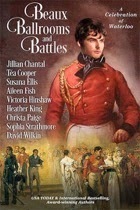
Looks good, huh? The talented writer and digital artist, Aileen Fish created this.
It will be available digitally for $.99 and then after a short period of time sell for the regular price of $4.99
The Trade Paperback version will sell for $12.99

My story in the anthology is entitled: Not a Close Run Thing at All, which of course is a play on the famous misquote attributed to Arthur Wellesley, ���a damn close-run thing��� which really was ���It has been a damned nice thing ��� the nearest run thing you ever saw in your life.���
Samantha, Lady Worcester had thought love was over for her, much like the war should have been. The Bastille had fallen shortly after she had been born. Her entire life the French and their Revolution had affected her and all whom she knew. Even to having determined who she married, though her husband now had been dead and buried these eight years.
Yet now Robert Barnes, a major-general in command of one of Wellington���s brigades, had appeared before her, years since he had been forgotten and dismissed. The man she had once loved, but because he had only been a captain with no fortune, her father had shown him the door.
With a battle at hand, she could not let down the defenses that surrounded her heart. Could she?
As her father���s hostess, she had travelled with him to Brussels where he served with the British delegation. Duty had taken her that night to the Duchess of Richmond���s ball. The last man she ever expected to see was Robert, who as a young captain of few prospects, had offered for her, only to be turned out by her father so that she could make an alliance with a much older, and better positioned (wealthy), aristocrat.Now, their forces were sure to engage Napoleon and the resurgent Grande Arm��e. Meeting Robert again just before he was to be pulled into such a horrific maelstrom surely was Fate���s cruelest trick ever. A fate her heart could not possibly withstand.

Space Opera Books Presents A Trolling We Will Go (Book #1)
A Trolling We Will Go
Not only do I write Regency and Romance, but I also have delved into Fantasy.
The Trolling series, (the first three are in print) is the story of a man, Humphrey. We meet him as he has left youth and become a man with a man���s responsibilities. We follow him in a series of stories that encompass the stages of life.
We see him when he starts his family, when he has older sons and the father son dynamic is tested. We see him when his children begin to marry and have children, and at the end of his life when those he has loved, and those who were his friends proceed him over the threshold into death.
All this while he serves a kingdom troubled by monsters. Troubles that he and his friends will learn to deal with and rectify.
It is now available in a variety of formats. For $.99 you can get this fantasy adventure.
Barnes and Noble for your Nook
The Valley Kingdom of Torahn had been at peace for fifty years since the Council of Twenty-One saw fit to dispense with their royal family.
The only Kingdom without a King on the west side of the continent. But late last year, something caused the Goblins in the Old Forest, Karasbahn to stir and act courageous.
Something that men can not remember seeing Goblins ever doing. What has gotten the Goblins in such a state?
Whatever it is, it can not be good news for Torahn. Or for Humphrey, a woodcutter for a small town, far from Karasbahn.
But part of the Kingdom���s militia, with no family or other exemptions. He is perfect to be sent to the Old Forest and find out what scares the Goblins that they have become fearless.
Feedback
If you have any commentary, thoughts, ideas about the book (especially if you buy it, read it and like it ;-) then we would love to hear from you.

March 22, 2015
Regency Personalities Series-Sir Henry Askew
Regency Personalities Series
In my attempts to provide us with the details of the Regency, today I continue with one of the��many period notables.
Sir Henry Askew
1775 ��� 1847
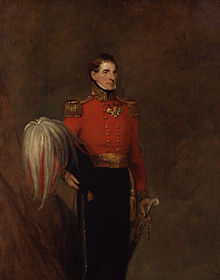
Sir Henry Askew
Sir Henry Askew was an officer of the British Army. He served during the Napoleonic Wars and fought at the Battle of Waterloo. He rose to the rank of lieutenant-general during his career.
Askew was born in 1775, the third son of John Askew of Pallinsburn House, Northumberland. He joined the army in 1793 as an ensign in the 1st Foot. He served in the campaigns in Holland and Flanders in 1799, and then in the Walcheren Campaign in 1809. Askew took part in the Peninsular War and operations in the south of France, being commended with a medal for his part in the Battle of the Nive.
He was wounded at the Battle of Quatre Bras and received the Waterloo Medal. He was knighted in 1821 and became a lieutenant-general in 1837.
His family seat was Pallinsburn House in Northumberland.
Askew died in 1847
And Coming on April 1st, 2015
Beaux Ballrooms and Battles anthology, celebrating the 200th anniversary of the victory at Waterloo in story.
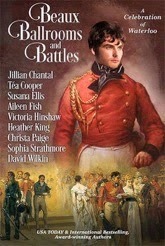
Looks good, huh? The talented writer and digital artist, Aileen Fish created this.
It will be available digitally for $.99 and then after a short period of time sell for the regular price of $4.99
The Trade Paperback version will sell for $12.99

My story in the anthology is entitled: Not a Close Run Thing at All, which of course is a play on the famous misquote attributed to Arthur Wellesley, ���a damn close-run thing��� which really was ���It has been a damned nice thing ��� the nearest run thing you ever saw in your life.���
Samantha, Lady Worcester had thought love was over for her, much like the war should have been. The Bastille had fallen shortly after she had been born. Her entire life the French and their Revolution had affected her and all whom she knew. Even to having determined who she married, though her husband now had been dead and buried these eight years.
Yet now Robert Barnes, a major-general in command of one of Wellington���s brigades, had appeared before her, years since he had been forgotten and dismissed. The man she had once loved, but because he had only been a captain with no fortune, her father had shown him the door.
With a battle at hand, she could not let down the defenses that surrounded her heart. Could she?
As her father���s hostess, she had travelled with him to Brussels where he served with the British delegation. Duty had taken her that night to the Duchess of Richmond���s ball. The last man she ever expected to see was Robert, who as a young captain of few prospects, had offered for her, only to be turned out by her father so that she could make an alliance with a much older, and better positioned (wealthy), aristocrat.Now, their forces were sure to engage Napoleon and the resurgent Grande Arm��e. Meeting Robert again just before he was to be pulled into such a horrific maelstrom surely was Fate���s cruelest trick ever. A fate her heart could not possibly withstand.



